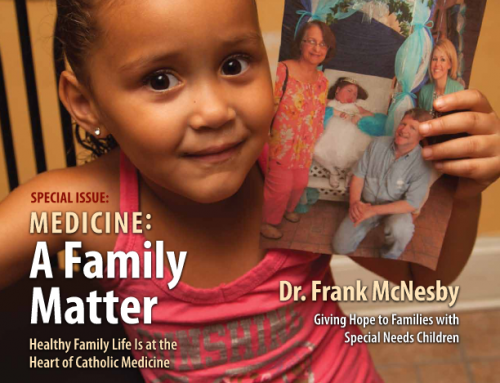This is an official CDC HEALTH ADVISORY
Distributed via the CDC Health Alert Network (HAN)June 2, 2015, 13:00 ET (1:00 PM ET)CDCHAN-00378
Bird Infections with Highly-Pathogenic Avian Influenza A (H5N2), (H5N8), and (H5N1) Viruses: Recommendations for Human Health Investigations and Response
Summary: Highly-pathogenic avian influenza A H5 viruses have been identified in birds in the United States since December 2014. The purpose of this HAN Advisory is to notify public health workers and clinicians of the potential for human infection with these viruses and to describe CDC recommendations for patient investigation and testing, infection control including the use personal protective equipment, and antiviral treatment and prophylaxis.
Background
Between December 15, 2014, and May 29, 2015, the US Department of Agriculture (USDA) confirmed more than 200 findings of birds infected with highly-pathogenic avian influenza (HPAI) A (H5N2), (H5N8), and (H5N1)[1] viruses. The majority of these infections have occurred in poultry, including backyard and commercial flocks. USDA surveillance indicates that more than 40 million birds have been affected (either infected or exposed) in 20 states. These are the first reported infections with these viruses in US wild or domestic birds.
While these recently-identified HPAI H5 viruses are not known to have caused disease in humans, their appearance in North American birds may increase the likelihood of human infection in the United States. Human infection with other avian influenza viruses, including a different HPAI (H5N1) virus found in Asia, Africa, and other parts of the world; HPAI (H5N6) virus; and (H7N9) virus, has been associated with severe, sometimes fatal, disease. Previous human infections with other avian viruses have most often occurred after unprotected direct physical contact with infected birds or surfaces contaminated by avian influenza viruses, being in close proximity to infected birds, or visiting a live poultry market. Human infection with avian influenza viruses has not occurred from eating properly cooked poultry or poultry products. For more information on the origin of the recently-identified HPAI H5 viruses in the United States, their clinical presentation in birds, and their suspected clinical presentation in humans, please see http://www.cdc.gov/flu/avianflu/hpai/hpai-background-clinical-illness.htm.
CDC considers the risk to the general public from these newly-identified US HPAI H5 viruses to be low; however, people with close or prolonged unprotected contact with infected birds or contaminated environments may be at greater risk of infection. Until more is known about these newly-identified HPAI H5 viruses, public health recommendations are largely consistent with guidance for influenza viruses associated with severe disease in humans (e.g., HPAI H5N1 viruses that have caused human infections with high mortality in other countries). Currently, CDC considers these newly-identified HPAI H5 viruses as having the potential to cause severe disease in humans and recommends the following:
Clinicians should consider the possibility of HPAI H5 virus infection in persons showing signs or symptoms of respiratory illness who have relevant exposure history. This includes persons who have had contact with potentially-infected birds (e.g., handling, slaughtering, defeathering, butchering, culling, preparation for consumption); direct contact with surfaces contaminated with feces or parts (carcasses, internal organs, etc.) of potentially-infected birds; and persons who have had prolonged exposure to potentially-infected birds in a confined space.
State health departments are encouraged to investigate potential human cases of HPAI H5 virus infection as described below and should notify CDC within 24 hours of identifying a case under investigation. Rapid detection and characterization of novel influenza A viruses in humans remain critical components of national efforts to prevent further cases, evaluate clinical illness associated with them, and assess any ability for these viruses to spread among humans.
People should avoid unprotected exposure to sick or dead birds, bird feces, litter, or materials contaminated with suspected or confirmed HPAI H5 viruses. All recommended personal protective equipment (PPE) should be worn when in direct or close contact (within about 6 feet) with sick or dead poultry, poultry feces, litter or materials contaminated with suspected or confirmed HPAI H5 viruses.
People exposed to HPAI H5-infected birds (including people wearing PPE) should be monitored for signs and symptoms consistent with influenza beginning after their first exposure and for 10 days after their last exposure.Influenza antiviral prophylaxis may be considered to prevent infection (see below). Persons who develop respiratory illness after exposure to HPAI H5-infected birds should be tested immediately for influenza by the state health department and be given influenza antiviral treatment (see below). State health departments are encouraged to investigate all possible human infections with HPAI H5 virus and should notify CDC promptly when testing for avian influenza in people.
Recommendations for Surveillance and TestingPatients who meet clinical and exposure criteria should be tested for HPAI H5 virus infection by reverse-transcription polymerase chain reaction (RT-PCR) assay using H5-specific primers and probes. Additional persons in whom clinicians suspect HPAI H5 virus infection also may be tested.Clinical Illness Criteria: Patients with new-onset influenza-like illness (ILI) or acute respiratory infection (ARI), which may include conjunctivitis, which has been associated with avian influenza in humans. Clinical presentation of persons infected with these HPAI H5 viruses may vary somewhat from seasonal influenza or infection with other novel influenza A viruses. Thus, clinicians are encouraged to consider a range of respiratory signs and symptoms when evaluating a patient with appropriate exposure for HPAI H5 virus infection.Bird Exposure Criteria: Patients who have had recent contact[2] (within 10 days of illness onset) with potentially-infected (i.e., sick or dead birds, or flocks where HPAI H5 virus infection has been confirmed) in any of the following categories:· Domestic poultry (e.g., chickens, turkeys, ducks, geese)· Wild aquatic birds (e.g., ducks, geese, swans)· Birds of prey (e.g., falcons) that have had contact with wild aquatic birds
Multiple respiratory tract specimens should be collected from persons with suspected HPAI H5 virus infection, including nasopharyngeal, nasal, and throat swabs. Patients with severe respiratory disease also should have lower respiratory tract specimens collected, if possible. For more information on surveillance and testing of persons under investigation for avian HPAI H5 virus infection, please see http://www.cdc.gov/flu/avianflu/severe-potential.htm.
Recommendations for Worker ProtectionTo reduce their risk of HPAI H5 virus infection, poultry workers and responders should avoid unprotected direct physical contact with sick or dead birds, and carcasses, feces, or litter from potentially-infected poultry. Poultry workers should wear recommended PPE when in direct contact with sick or dead birds, and carcasses, feces, or litter from potentially-infected poultry, and when going into any buildings with sick or dead poultry, or carcasses, feces, or litter frompotentially-infected poultry. Workers should receive training on and demonstrate an understanding of when to use PPE; what PPE is necessary; how to properly put on, use, take off, properly dispose of, and maintain PPE; and the limitations of PPE. For additional guidance on worker protection, please see http://www.cdc.gov/flu/avianflu/h5/worker-protection-ppe.htm.
Recommendations for Infection ControlFor patients presenting for medical care or evaluation who have illness consistent with influenza and recent exposure to potentially-infected birds, standard, contact, and airborne precautions are recommended. For additional guidance on infection control precautions for patients who may be infected with HPAI H5 virus, please refer to guidance for infections with novel influenza A viruses associated with severe disease found at http://www.cdc.gov/flu/avianflu/novel-flu-infection-control.htm.
Recommendations for Influenza Antiviral Treatment and ChemoprophylaxisChemoprophylaxis with influenza antiviral medications can be considered for all persons meeting bird exposure criteria. Decisions to initiate antiviral chemoprophylaxis should be based on clinical judgment, with consideration given to the type of exposure and to whether the exposed person is at high risk for complications from influenza (http://www.cdc.gov/flu/professionals/antivirals/summary-clinicians.htm).Chemoprophylaxis is not routinely recommended for personnel who used proper PPE while handling sick or potentially-infected birds or decontaminating infected environments (including animal disposal).If antiviral chemoprophylaxis is initiated, treatment dosing for the neuraminidase inhibitors oseltamivir or zanamivir (one dose twice daily) is recommended instead of the typical antiviral chemoprophylaxis regimen (once daily).[3] For specific dosage recommendations for treatment by age group, please see Influenza Antiviral Medications: Summary for Clinicians (http://www.cdc.gov/flu/professionals/antivirals/summary-clinicians.htm) Physicians should consult the manufacturer’s package insert for dosing, limitations of populations studied, contraindications, and adverse effects. If exposure was time-limited and not ongoing, five days of medication (one dose twice daily) from the last known exposure is recommended.Treatment of Symptomatic Persons with Bird Exposure: Patients meeting bird exposure criteria who develop symptoms compatible with influenza should be referred for prompt medical evaluation and empiric initiation of influenza antiviral treatment with a neuraminidase inhibitor as soon as possible. Clinical benefit is greatest when antiviral treatment is administered early, especially within 48 hours of illness onset. Antiviral treatment should not be delayed while waiting for laboratory testing results. For detailed guidance, please see Interim Guidance of the Use of Antiviral Medications for the Treatment of Human Infection with Novel Influenza A Viruses Associated with Severe Human Disease(http://www.cdc.gov/flu/avianflu/novel-av-treatment-guidance.htm).
Monitoring and Chemoprophylaxis of Close Contacts of Persons with HPAI H5 virus infection: If a case of human infection with HPAI H5 virus is identified in the United States, recommendations for monitoring and chemoprophylaxis of close contacts of the infected person are different than those that apply to persons who meet bird exposure criteria. For detailed guidance, please see Interim Guidance on Follow-up of Close Contacts of Persons Infected with Novel Influenza A Viruses Associated with Severe Human Disease (http://www.cdc.gov/flu/avianflu/novel-av-treatment-guidance.htm).
VaccinationNo human vaccines for HPAI (H5N1), (H5N2), or (H5N8) are available in the United States. Efforts are underway to develop vaccines against these HPAI H5 viruses. Seasonal influenza vaccines do not provide any protection against human infection with HPAI H5 viruses.
For More Information
· General information about avian influenza viruses and how they spread (http://www.cdc.gov/flu/avianflu/avian-in-humans.htm) · Past Outbreaks of Avian Influenza in North America
(http://www.cdc.gov/flu/avianflu/past-outbreaks.htm)· Transmission of Avian Influenza A Viruses Between Animals and People
(http://www.cdc.gov/flu/avianflu/virus-transmission.htm)· H5 Viruses in the United Stateshttp://www.cdc.gov/flu/avianflu/h5/index.htm
· General information about Avian Influenza viruses in birdshttp://www.cdc.gov/flu/avianflu/avian-in-birds.htm
· Avian Influenza: Information for Health Professionals and Laboratorianshttp://www.cdc.gov/flu/avianflu/healthprofessionals.htm
The Centers for Disease Control and Prevention (CDC) protects people’s health and safety by preventing and controlling diseases and injuries; enhances health decisions by providing credible information on critical health issues; and promotes healthy living through strong partnerships with local, national, and international organizations.
____________________________________________________________________________________
Categories of Health Alert Network messages:Health Alert Requires immediate action or attention; highest level of importanceHealth Advisory May not require immediate action; provides important information for a specific incident or situationHealth Update Unlikely to require immediate action; provides updated information regarding an incident or situationHAN Info Service Does not require immediate action; provides general public health information
[1]The H5N1 virus isolated from US wild birds is a new mixed-origin virus (a “reassortant”) that is genetically different from the HPAI H5N1 viruses that have caused human infections with high mortality in other countries (notably in Asia and Africa). No human infections with this new reassortant H5N1 virus have been reported in any country.[2]Contact may include: direct contact with birds (e.g., handling, slaughtering, defeathering, butchering, culling, preparation for consumption); or direct contact with surfaces contaminated with feces or bird parts (carcasses, internal organs, etc.); or prolonged exposure to birds in a confined space.[3]This recommendation for twice daily antiviral chemoprophylaxis dosing frequency is based on limited data that support higher chemoprophylaxis dosing in animals for avian A (H5N1) virus (Boltz DA, et al JID 2008;197:1315) and the desire to reduce the potential for development of resistance while receiving once daily dosing (BazM, et al NEJM 2009;361:2296; Cane A et al PIDJ 2010;29:384; MMWR 2009;58:969).
………………………………………….
http://www.un-influenza.org/?q=content/news-pouch-1-june-2015










